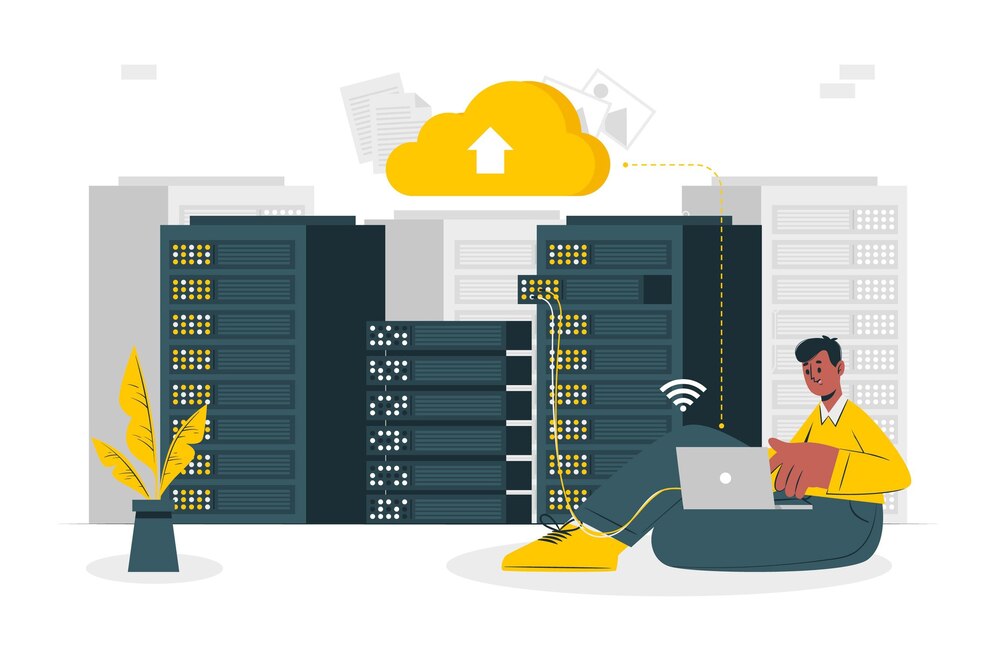
A Concise Guide to Cloud Application Development
Emerging technologies have brought the digital shift in every facet of the business. As a result, many enterprises are exploring new ways to expand their customer base and win new ones. They are pushing innovative ideas to stay abreast of their competitors. And one such idea is the adoption of cloud-enabled solutions.
Cloud-based solutions make data gathering convenient for businesses. The best thing about cloud development services is that one won’t have to worry about server costs, hardware troubles, or data storage concerns.
However, the growth and popularity of cloud applications raise many questions for businesses and enterprises, particularly regarding how to develop cloud-based apps correctly.
In this guide, we will show how cloud app development benefits an enterprise and how to do it in the right way.
Benefits Of Cloud Application Development
Cloud computing delivers different resources, servers, and databases via the internet. It enables enterprises to employ necessary resources and storage space without maintaining bulky infrastructure.
Developing cloud-enabled applications offer better scalability and flexibility. Unlike traditional monolithic apps, cloud applications are developed and patched in a single, seamless block. They can be created as microservices that solve a single problem and communicate with each other via APIs.
Here are some perks of developing cloud applications:
1. Ready To Use Infrastructure
In cloud applications, there is no need to invest a fortune in the hardware used for hosting purposes. Instead, you can use BaaS (Backend As a Service) to link apps to a third-party server or can even execute code by using FaaS (Function as a Service).
2. Better Quality Development
With cloud development, there is no need to worry about various aspects like deployment tools, networking, configuration, and resources. As a result, the development team can only focus on expanding an application’s capabilities with high-quality codes within a minimal time.
3. Scalable App Development
Cloud application development puts forward a scalable solution imperative in today’s emerging digital world. It offers an app that can easily upscale or downscale as per changing market trends. In addition, cloud app development facilitates businesses to add the latest features, modules, and panels to make their application more effective and user-friendly.
4. Save Big on Costs
Cloud doesn’t require upfront investments as most cloud services operate as a pay-as-you-go model. As per this model, one only gets charged for active services, and no extra costs will be added to scale operations up or down, thanks to auto-scaling.
Steps of Cloud Application Development
Cultivating a progressive mindset is essential in cloud app development. Start with identifying pain points, target audience, and market demand. Then analyze how a cloud application can resolve challenges.
Follow these steps right away to create a successful cloud-based application:
1. Select a Suitable Deployment Model
Before developing your dream cloud application, choose the most appropriate strategy for deploying it.
Here is the most popular deployment strategy to choose from:
- Public
The public cloud stores your data on a third-party server, and the cloud provider manages the server infrastructure and resources.
- Private
In a private cloud, one can host the cloud server externally or on-premises, keep strong firewalls to protect it, and manage it through the organization’s IT department.
- Multi-cloud
Multi-cloud strategy enables an organization to utilize a combination of public and private clouds or a mix of public, private, and edge clouds for service distribution.
2. Hire A Reputed Cloud Development Team
Developing a cloud app involves highly experienced technical specialists. There are three main options when hiring a cloud app development company: –
- In-house Development Team
In-house cloud developers offer total control over the entire development process. Here companies can employ developers and let them perform the assigned tasks.
- Freelancers
A freelancer works on an ad hoc basis rather than as a full-time employee. They often work for multiple clients at once, but some might choose to work with one company on a contractual basis.
- Outsourcing
A cloud outsourcing provider delivers managed cloud services and a dedicated team to manage them. The outsourcing model enables hiring and scaling a cloud development team within a short period.
3. Define Architecture And Features
A simplified architecture is imperative for efficiently developing and employing robust cloud solutions. Skilled cloud app developers prefer to use the latest cloud infrastructure built on microservices.
These developers mainly offer three service models – SaaS, PaaS, and IaaS. Businesses can choose any of them to ensure a seamless cloud migration.
4. Choose a Suitable Tech Stack
Consult with experts while selecting the technology stack for building cloud applications. Carefully choose the cloud development platforms, third-party integrations, and additional services that will form the core functionality of an app.
Here is the commonly used tech stack for cloud apps:
Utilities
- Heap
- Twilio
- Google Analytics
- Optimizely
- Zuora
Application and data
- ClearDB
- Akamai
- Cloudant
DevOps
- Bitbucket
- Cloud9 IDE
- Datadog
- Jenkins

5. Select A Suitable App Monetization Model
Now that you are aware of users’ needs, you can predict what your users will pay for. Here are the core monetization models to choose from:
- Paid
In this monetization model, users pay once to download and access your app.
- Freemium
In the freemium model, users can download the app without any cost and pay to upgrade their accounts to use premium features.
- In-app Purchases
Users can pay for premium features, items, or content within the app with an in-app purchase option.
- Subscription
Subscription model enables users to access additional features by paying a recurring price at regular intervals.
6. Test As Much As You Can!
Conduct various tests to ensure that the cloud app has no bugs or security issues. For this, it’s advisable to consult a reputed cloud consulting services provider.
Such companies offer design, development, management, and testing services. With one team working on your project from start to finish, communication is simplified to a great extent. All these things eventually result in higher product quality.
Cost To Build A Successful Cloud Application
Usually, a SaaS-based cloud app can cost somewhere between $1000 to $500,000, depending on the features and functionalities you want to add. Whereas a basic cloud application app costs around $20,000, and a complex cloud application will amount between $30,000 to $55,000.
Conclusion
Cloud application development offers many benefits to businesses, like cost reduction, seamless upscaling, and better accessibility of the final product. However, cloud application development becomes challenging if not carried out the right way. So, consulting a reputed cloud app development team is advisable to select the most appropriate cloud model that aligns with one’s business requirements.















